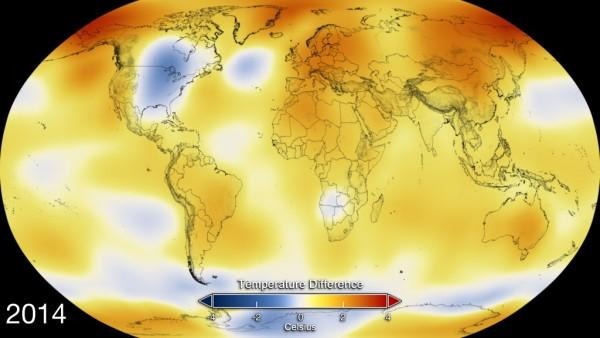We're Three Minutes From Doomsday
Climate change and the unrelenting development and stockpiling of nuclear weapons have seen the Doomsday Clock pushed another minute closer to global disaster, with scientists warning that we're three metaphorical minutes from destruction. The clock, a symbolic representation of how close humanity is to teetering on the edge of effective annihilation by its own hand, is now just three minutes from midnight, with the team in charge of the hands – the Bulletin of Atomic Scientists, counting seventeen Nobel Prize laureates among its members – ominously suggesting that "the probability of global catastrophe is very high."
It's the first change for the Doomsday Clock in three years, after we returned from the gadgety bacchanalian excesses of CES 2012 to discover lethargy on both climate change and nuclear disarmament had left us at five minutes to midnight.
Several years later, and the same core issues are still the biggest risk factors facing our planet, the group says. World leaders have acted too slowly, executive director Kennette Benedict accused, arguing that "these failures of leadership endanger every person on Earth."
Twenty-five years after the Cold War, the scientists point out, and efforts to reduce world nuclear arsenals have stalled. Instead of decommissioning the weapons, the US and Russia have instead worked to modernize them in ways that bypass existing treaties.
"In 2015, unchecked climate change, global nuclear weapons modernizations, and outsized nuclear weapons arsenals pose extraordinary and undeniable threats to the continued existence of humanity, and world leaders have failed to act with the speed or on the scale required to protect citizens from potential catastrophe" The Bulletin of Atomic Scientists Science and Security Board
As for climate change, while some doubt it even exists – or at least argue about its impact in recent years – the Bulletin is in no doubt of its severity.

While discussions over whether 2014 was indeed the hottest year ever or not continue, the scientists point out that a 3 to 8 degree Celsius increase by the end of the century is predicted if current climate change policies continue.
"A similarly "modest" global average warming of 3 to 8 degrees Celsius brought Earth out of the frigid depths of the last ice age, utterly transforming the surface of the planet and in the process making it hospitable to the development of human civilization. To risk a further warming of this same magnitude is to risk the possibility of an equally profound transformation of Earth's surface—only this time the planet's hospitality to humanity can by no means be taken for granted" The Bulletin of Atomic Scientists Science and Security Board
Created back in 1947, the Doomsday Clock was originally merely a symbol of the threat of nuclear war. In the intervening years, it has come to reflect the dwindling supplies of – and humanity's increasing reliance on – fossil fuels, along with the impact of climate change, and other scientific discoveries with potential for a serious impact on human life.
Originally, the time was set at 11:53pm, or seven minutes to midnight. The latest it has ever been was 11:58pm in 1953, when the US and Russia each tested thermonuclear devices within the space of nine months.
"The probability of global catastrophe is very high," the Bulletin of Atomic Scientists conclude, "and the actions needed to reduce the risks of disaster must be taken very soon."
